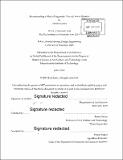| dc.contributor.advisor | Renée Green. | en_US |
| dc.contributor.author | Jama, Zacharia. | en_US |
| dc.contributor.other | Massachusetts Institute of Technology. Department of Architecture. | en_US |
| dc.date.accessioned | 2020-01-23T16:58:27Z | |
| dc.date.available | 2020-01-23T16:58:27Z | |
| dc.date.copyright | 2019 | en_US |
| dc.date.issued | 2019 | en_US |
| dc.identifier.uri | https://hdl.handle.net/1721.1/123589 | |
| dc.description | Thesis: S.M. in Art, Culture and Technology, Massachusetts Institute of Technology, Department of Architecture, 2019 | en_US |
| dc.description | Cataloged from PDF version of thesis. | en_US |
| dc.description | Includes bibliographical references (pages 72-75). | en_US |
| dc.description.abstract | The thesis discusses techniques for reconstructing a film about mass graves in Northern Somalia (Somaliland), the search for unanswerable questions, and navigating the trauma involved in the cinematic process. In 2019, Somalia is just as fragmented as it was during colonization. During the Somali Civil War 30 years ago, the dictatorship of Siad Barre was challenged; he responded with collective punishment on groups of civilians based on their tribe. In Somaliland, this punishment meant mass executions and the indiscriminate bombardment of cities. In 2015, I visited Somalia for the first time. I filmed forensic anthropologists exhuming mass graves and the following year, released an investigative documentary about the mass atrocities in Somaliland. In retrospect, the selectivity of victim interviews and greater emphasis on confronting war criminals seem problematic given the sensitivity of the topic: victims relived the trauma of mass atrocities and in doing so, it may have caused further trauma. This thesis and the accompanying film attempt a more dignified and respectful approach to uncovering the events in the Somali Civil War. The new iterations of the film discussed in the thesis use a more essayistic approach (Minh-ha, Farocki, Marker) and a more temporally-fragmented editing style. The resulting film aims to create a more appropriate experience that resembles the filmmaker's reality and the way memory works. | en_US |
| dc.description.statementofresponsibility | by Zacharia Jama. | en_US |
| dc.format.extent | 75 pages | en_US |
| dc.language.iso | eng | en_US |
| dc.publisher | Massachusetts Institute of Technology | en_US |
| dc.rights | MIT theses are protected by copyright. They may be viewed, downloaded, or printed from this source but further reproduction or distribution in any format is prohibited without written permission. | en_US |
| dc.rights.uri | http://dspace.mit.edu/handle/1721.1/7582 | en_US |
| dc.subject | Architecture. | en_US |
| dc.title | Reconstructing a film in fragments : Xasuqii means massacre | en_US |
| dc.type | Thesis | en_US |
| dc.description.degree | S.M. in Art, Culture and Technology | en_US |
| dc.contributor.department | Massachusetts Institute of Technology. Department of Architecture | en_US |
| dc.identifier.oclc | 1135857669 | en_US |
| dc.description.collection | S.M.inArt,CultureandTechnology Massachusetts Institute of Technology, Department of Architecture | en_US |
| dspace.imported | 2020-01-23T16:58:26Z | en_US |
| mit.thesis.degree | Master | en_US |
| mit.thesis.department | Arch | en_US |
